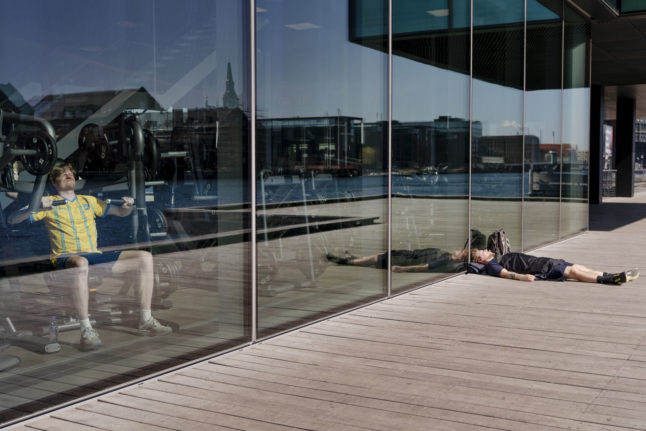Closures on Copenhagen Metro
The Copenhagen Metro’s M3 Cityring line, along with the M4 line, will both be closed for over two weeks in the middle of February.
The two Metro lines will shut from February 10th-26th so that the Metro can run test operations before opening five new station on the M4 line this summer.
The test runs are a legal requirement for the new stations, which will be served by driverless systems as are the existing shared M3 and M4 stations.
M1 and M2, the older parts of the Metro, will run as normal during the closure and buses will run in place of the closed lines. You can see their schedules and stops here.
Children go free on rural island’s ferries
West coast island Fanø has announced free travel for children for the rest of 2024, effective from February 1st.
All youngsters up to the age of 17 can go free as the island introduces a new fare system from February.
Tickets must still be “purchased”, but they won’t cost anything, operator Molslinjen said in a press statement. That is because the cheap and free fares are part of a government scheme to improve public transportation in rural Denmark, so data collection is needed to measure the success of the scheme.
READ ALSO: Small Danish islands welcome proposal for cheaper ferries
New work environment and anti-social dumping laws take effect
New laws aimed at strengthening workplace health and safety protections, and to prevent social dumping, take effect on February 1st.
The changes were initially agreed by political parties last spring, before being adopted by parliament in December.
The rules provide for a streamlining of workplace inspections, better protection for staff representatives, and checks in place to stop employers sanctioned by regulator Work Environment in Denmark (Arbejdstilsynet) from gaining approval for fast-track hiring of foreign workers.
The latter of these changes is intended as a protection against social dumping, a practice in which foreign workers are hired under pay and conditions below the local standards.
READ ALSO: Can foreign workers be exploited on the Danish labour market?
Fastelavn
Fastelavn is celebrated in Denmark every year on the Sunday before Shrove Tuesday, which this year is February 11th. Nurseries, kindergartens and schools may also celebrate the day in the week leading up to it and it adds some excitement to what can feel like a boring winter month.
Some call it a Nordic Halloween. Children dress up, but unlike Halloween, they don’t have to be scary – any costume goes, so parents can raid the dressing up box for whatever they can find.
Once dressed up, the children form an orderly queue and take it in turns to hit a large barrel. It’s similar to piñata, but is called slå katten af tønden, which means hit the cat out of the barrel. It comes from a very old tradition when a poor cat would be placed in the barrel and the barrel hit with a stick until the cat escaped. The cat was then chased out of the town, with the idea it was taking bad luck away with it.
After barrel-hitting is complete, some children then go around their neighbours knocking on doors for sweets or money, or some people hold a little party.
Fastelavn also involves fastelavnsboller. These are sweet rolls covered in icing and filled with cream – there are many variations so try all you can.
There’s also a Fastelavn song, that is guaranteed to stick in your head.
READ MORE: Fastelavn: What is the Danish childrens’ carnival all about?
Check your tax payments
Denmark’s Tax Authority SKAT generally advises taxpayers to check their preliminary returns (forskudsopgørelse) at the beginning of the year, especially if there were changes to their circumstances the preceding year (i.e. tax year 2023).
This can ensure you don’t have to pay a tax deficit when 2024’s tax returns are finalised next year.
The advice is still relevant in February and you can read more information about it in our explainer.
The preliminary tax return can be viewed (and information corrected) by visiting the Skat (tax authority) website and signing in with MitID. The agency can also be contacted over the phone or in writing for guidance on the return and other tax matters.
The annual tax return statement (årsopgørelse) for 2023 will meanwhile be ready on the Skat website on March 11th. Here you can see whether you are due money back or paid too little in tax last year. The deadline for correcting the annual statement is May 1st.
READ ALSO: Årsopgørelse: What you need to know about Denmark’s annual tax return
Copenhagen Fashion Week
If you live in the capital, you may have already noticed the increased buzz around the centre. Copenhagen Fashion Week started on January 29th and runs until February 2nd. The biannual event attracts thousands of people to Copenhagen, as fashion is celebrated with exhibitions, street parties, mini-concerts and catwalk shows.
Lighter days are coming
February is still very much the depth of winter in Denmark but the days are slowly getting longer. The sun is now rising just after 8am and setting just before 5pm.
Nights remain longer than days until the spring equinox or jævndøgn in Danish, which occurs on March 20th this year.
Denmark’s dark winters aren’t as severe as in Sweden and Norway, which both experience polar nights – when the sun doesn’t rise at all for several weeks.



 Please whitelist us to continue reading.
Please whitelist us to continue reading.
Member comments